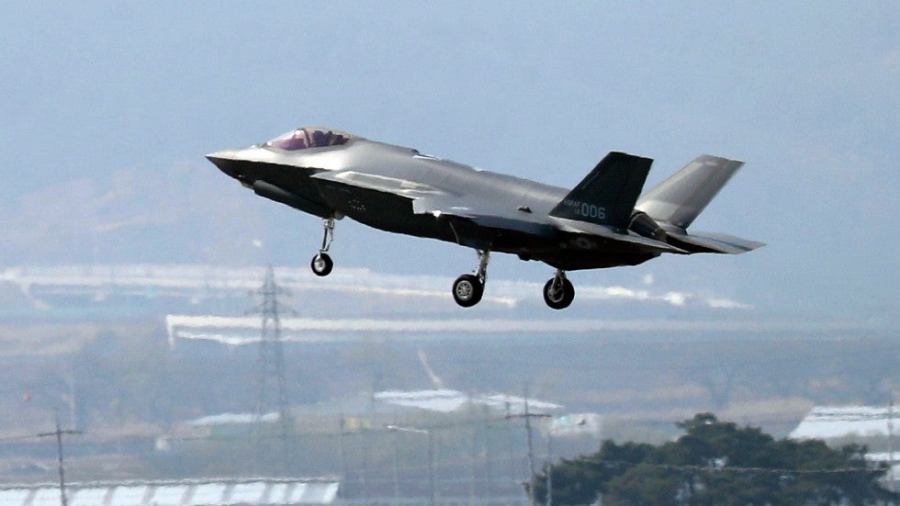Bad policy ideas have a way of returning from the dead in the nation’s capital. In 2011, following years of opposition from multiple presidential administrations and the Department of Defense (DOD), along with a coalition of taxpayer organizations, the alternate engine for the F-35 Joint Strike Fighter (JSF) . Before it was supposed to be buried forever, members of Congress had added 13 earmarks costing $1.
5 billion. But the alternate engine was only mostly dead, and as the attempt to resurrect the program continues, many of the against it still apply. Like the first version, it is once again opposed by the , the , and taxpayer , and only supported by a handful of legislators motivated by parochial concerns.
New JSF capabilities have necessitated an engine upgrade. The most straightforward and cost-effective way to accomplish this would be to upgrade the existing engine through the Engine Core Upgrade (ECU) as opposed to funding a second engine, which would be built through the Adaptive Engine Transition Program (AETP). In a April 27, 2023, Senate Defense Appropriations Subcommittee , Air Force Secretary Frank Kendall stated that the AETP would require, “a large upfront cost associated with engineering, manufacturing and development.
” The Air Force that AETP development costs would be nearly $6. 7 billion, which is 279 percent more than the $2. 4 billion development cost for the ECU by Pratt & Whitney, which determined that the ECU would save tens of billions of dollars in total JSF lifecycle costs by avoiding a duplicative production line and global supply chain to service two separate engines.
Secretary Kendall that another adverse consequence of building an alternate engine would mean the Air Force alone would be forced to purchase 70 fewer JSFs. In addition to cost, the alternate engine also fails another basic threshold: compatibility. The second engine would not fit in the Marine Corp’s F-35B variant, and would substantial airframe modifications to work with in the F-35A and F-35C.
Proponents of the alternate engine often cite the advantages of competition. However, in the highly specialized, complex, and expensive world of defense contracting, competition is unlikely to result in savings for the taxpayer. To create competition, the DOD would have to underwrite two teams of engineers, as well as duplicate sets of tooling, parts, assembly sites, repair facilities, supply chains, management systems, workforces, and every other cost of production, obviating the potential for savings achieved through competition.
It would also make the JSF program, which already suffers from a poor readiness rate, even harder to maintain and keep flying consistently. Questions have also been about pilot safety if the alternate engine is deployed, and any alleged harm to the industrial base from using a sole-source engine is overblown. Despite these facts, the House Armed Services Committee version of the fiscal year 2024 National Defense Authorization Act (NDAA), H.
R. 2670, passed on July 14, 2023, authorized $588. 4 million for the alternate engine.
The House’s Defense Appropriations Act, H. R. 5365, included $150 million for the alternate engine, stipulating that the funding should be used for the Next Generation Adaptive Propulsion program, and not the F-35.
The Senate has thus far abstained from adding funding for the second engine. One thing is certain: the alternate engine has no future in the JSF. Speaking on July 18, 2023, Secretary Kendall that even if the alternate engine funding makes it into the final version of the NDAA, the AETP will never be used in the F-35 because the Air Force is committed to the ECU.
Despite being unsuitable for the JSF, the secretary said, “As often happens, the Hill doesn’t want to let go. ” Burying the alternate engine permanently should not be controversial. It has been consistently opposed by three presidential administrations, the DOD, taxpayers, and a host of independent analysts.
The ECU bests the AETP on cost, compatibility, and safety, and the advantages of competition and potential harm to the industrial base are wildly overstated. Moreover, funding an unnecessary second engine would contribute to the high costs and delays that have become the hallmark of the JSF program. With projected lifetime operations and maintenance costs of $1.
727 trillion, trimming costs in the most expensive weapons system in history are vital. It took several years to kill the first version of the alternate engine. Congress should get rid of it for good in a few months this time.
.
From: thehill
URL: https://thehill.com/opinion/congress-blog/4307928-the-f-35-alternate-engine-should-be-buried-forever/



